All photos besides unicorn from IMSA Digital Commons, https://digitalcommons.imsa.edu/campus_art/
The Illinois Mathematics and Science Academy (IMSA), much like the tourist trap in Michigan I visited this summer, is filled to the brim with strange statues of all kinds. From the iconic “Yare” to the Virgin Mary in A Wing of the main building, this article will explore the origins of all of IMSA’s statues and dispel your myths about them.
Entelechy
Entelechy is just another strange IMSA sculpture, right? Wrong! Seismic readings have shown that it’s actually the horn of a 1000-ton unicorn buried beneath IMSA’s campus! (See diagram above.) According to ancient Norse mythology, IMSA’s Ragnarok will be signaled by the ringing of every stop alarm and fire alarm at once, awakening the unicorn, who will proceed to destroy the entirety of campus, leaving only the good students who never let anyone in the building as survivors. The slumbering giant’s name, as told to Dr. Leon Lederman in a dream by a drunken fermion, is “Bob.”
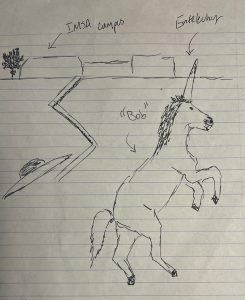
The real Entelechy.
Art as a Three-Ring Circus
With a title that pretentious, it’s got to be good! Its sculptor, Terrence Karpowicz, said it represented the electrons around the nucleus, showing how the IMSA students are both independent from and interconnected with the school community. IMSA’s chemistry faculty proposed a more realistic model, with clouds of sawdust floating around a solid wood core to represent an actual atom.

Art as a Three-Ring circus: The greatest name length to functionality ratio of any object at IMSA.
The Camel’s Gate
Someone once told me you could throw a particularly short sophomore through the small hole in the center, and he’d come out unscathed. I say, why bother?
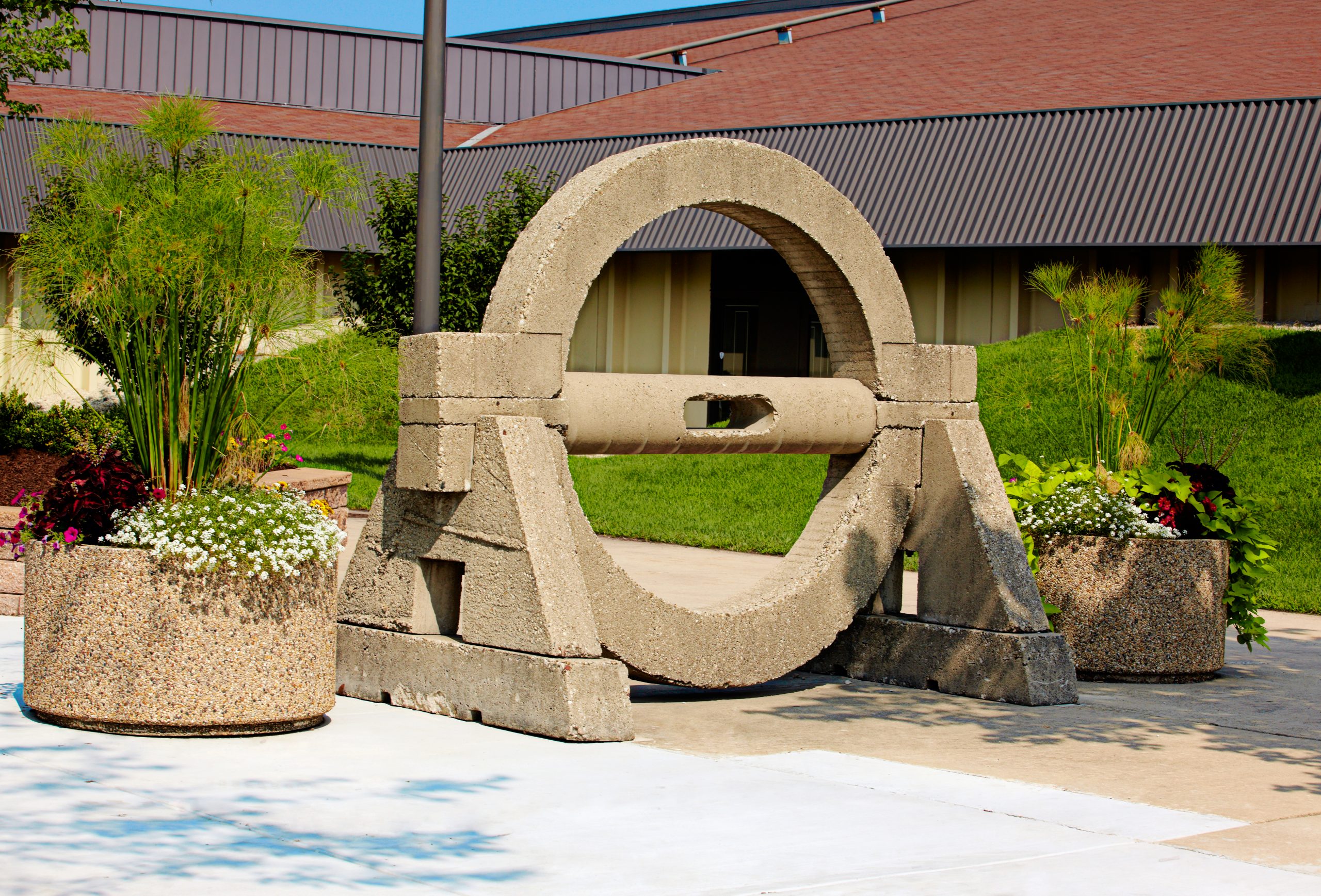
Camel’s Gate: Neither confirmed nor denied to be made from real Camel.
Universe Mobile
This art piece dangles high above old caf to remind IMSA students every day that, like infants, we can’t think for ourselves and must rely on the school for food and shelter. It also reminds us that the restrictions imposed on students by IMSA, our benevolent parent figure, are for our own good and safety.

This view of the Universe Mobile proves my theory that Jupiter is a projection by the lizard people… or maybe that’s just what they want you to think!
Crossing
We’ve all come dangerously close to falling into this sculpture and having it rip into our craniums like a giant can opener. No? Just me? They should at least put some padding on the end, just in case.
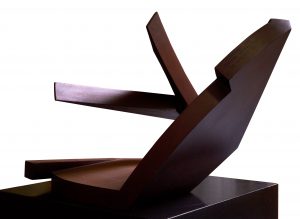
Crossing: A lawsuit waiting to happen.
Yare
An S-Tier IMSA napping spot, Yare was donated to IMSA by the Garbe iron works and was designed by sculptor Scott Wallace. Mr. Wallace, like IMSA students needing to “enhance” their essays, derived its name from a thesaurus, with “Yare” meaning “quick to spring to action.”
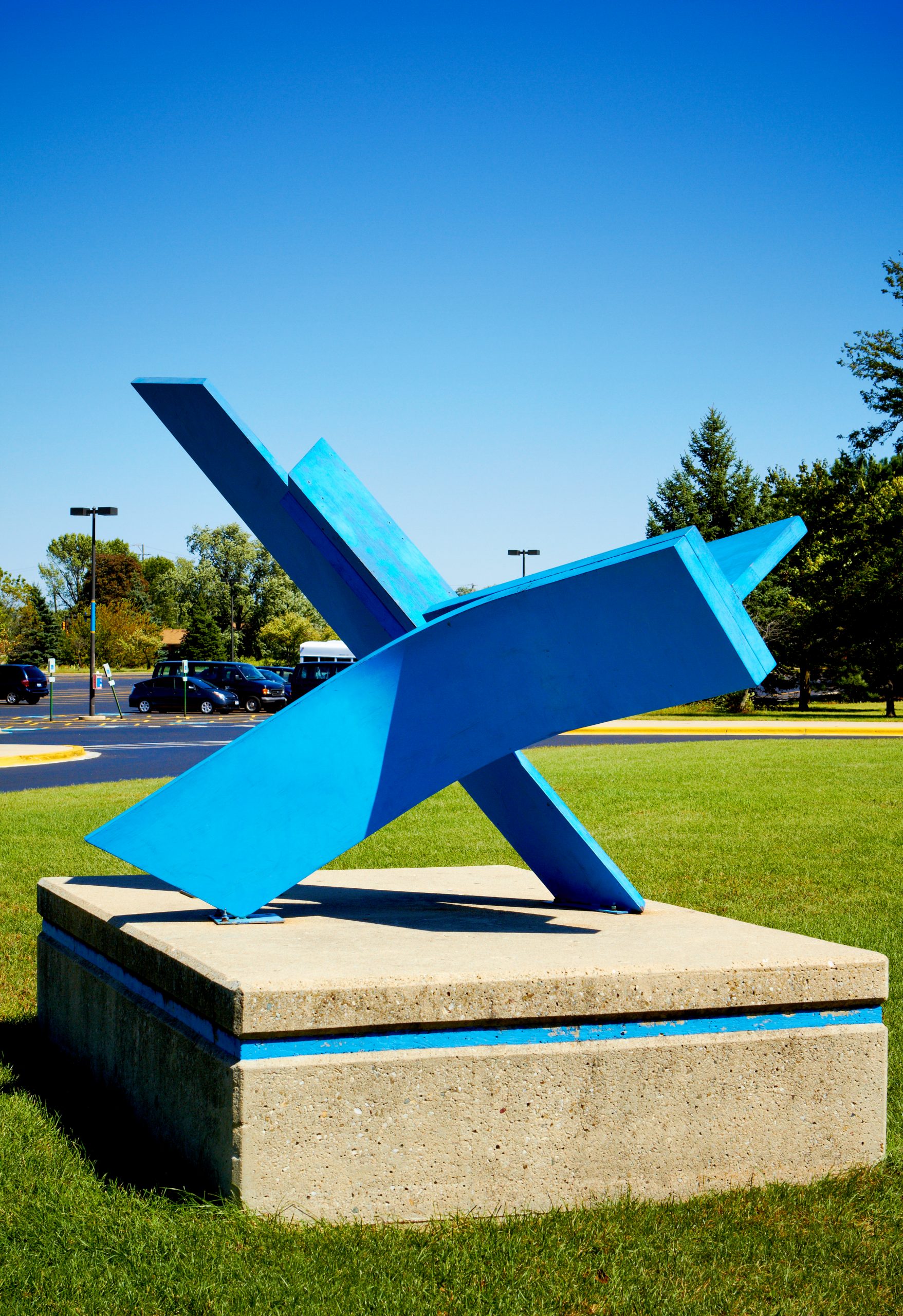
I thought Yare used to be painted red, but it turned out I was just remembering things wrong. It used to be painted yellow.
Blue Heron Nest
The bird who built the nest in old caf could usually count on a continuous supply of delicious cafeteria food such as apple cores and “mystery meat,” but abruptly left one day when it confused the anguished howls of students working on BC Calculus for coyote calls.

This beautiful fragment of nature hanging above a cold, sterilized environment is a constant reminder of human destructiveness. That’s deep as hell, I should put that in a college essay.
Sky Gate
An IMSA alumnus designed this structure as a method of catching unattended birthday balloons that floated up to the ceiling and leaked precious helium, preventing the choir’s tenors from reaching those extra-high notes at ILMEA. The balloon-catching method never caught on, but the Sky Gate remains an integral piece of IMSA art.

Sky gate is coming for your balloons, kids!
Memory Sculpture
This sculpture of the Virgin Mary, watching over A wing with compassion and love, is referred to by students as “Our Lady of Perpetual Test Extensions.” Actually, it isn’t, I just came up with this to fill space.

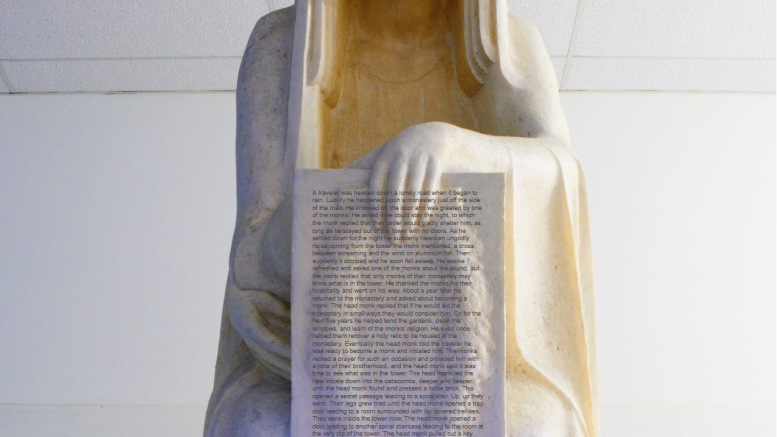




Be the first to comment on "The Iconic Statues of IMSA, and Where they Came From"